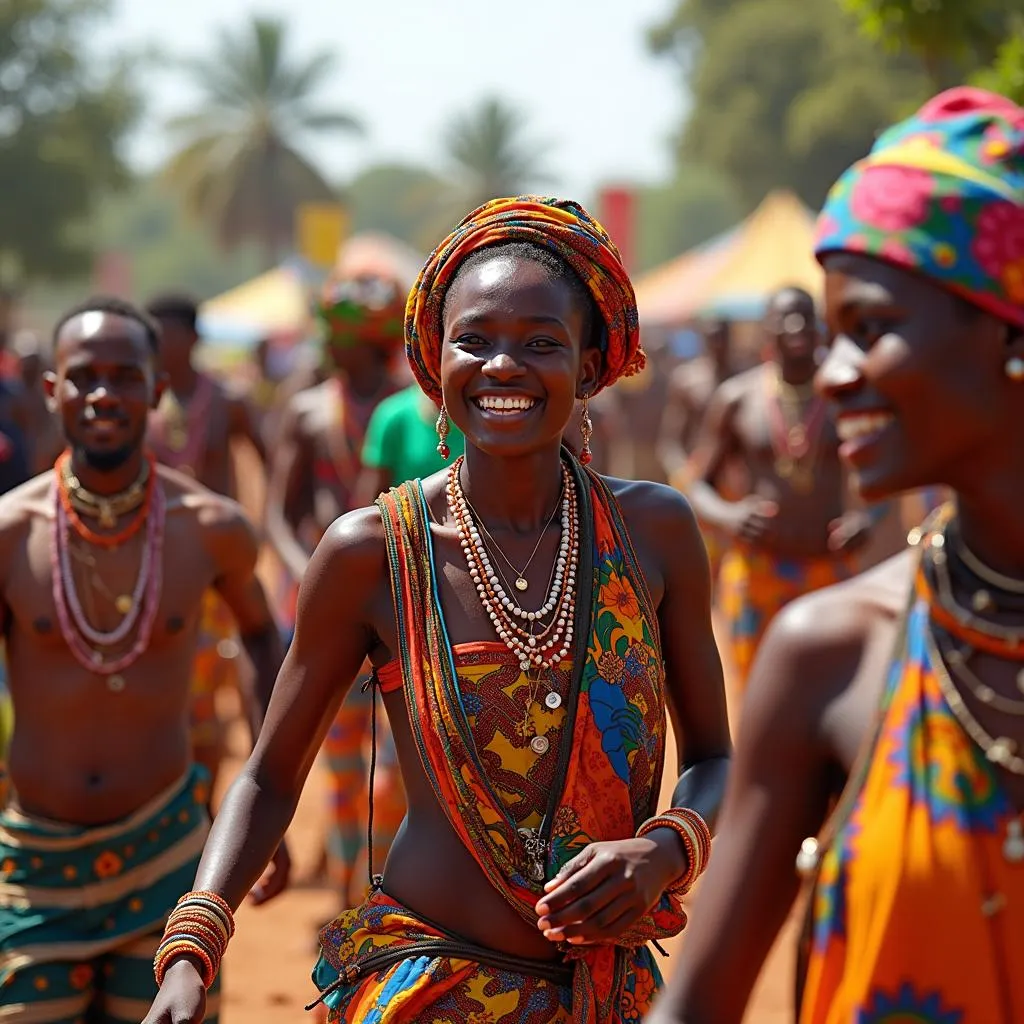African American French Braid Styles: A Celebration of Heritage and Creativity
African American French Braid Styles are more than just hairstyles; they are a vibrant expression of cultural heritage, creativity, and individuality. Rooted in centuries-old traditions, these intricate plaits have evolved over time, blending African aesthetics with modern influences to create a stunning array of looks for women, men, and children.
 Close-up of a woman with intricate cornrow braiding, showcasing the artistry and versatility of African American French braid styles.
Close-up of a woman with intricate cornrow braiding, showcasing the artistry and versatility of African American French braid styles.
A Rich History Woven into Every Strand
The history of French braiding within the African diaspora can be traced back thousands of years. Archaeological evidence reveals that braiding has been practiced in Africa for over 5,000 years, serving as both a practical and symbolic art form. In many African cultures, hairstyles were not merely decorative but conveyed important information about an individual’s social status, ethnicity, and even spiritual beliefs.
During the transatlantic slave trade, African women were forcibly separated from their cultures and identities. Their hair, often shaved upon arrival in the Americas, became a potent symbol of resistance and resilience. Despite the brutal conditions, enslaved Africans continued to braid their hair in secret, passing down techniques and styles from one generation to the next. These braids became a powerful way to maintain cultural connections and express personal identity in the face of oppression.
From Cornrows to Box Braids: Exploring the Diversity of Styles
Today, African American French braid styles encompass a wide spectrum of looks, each with its own unique history and aesthetic appeal. Here are just a few examples of the diverse world of French braiding:
-
Cornrows: These tightly-woven braids, named for their resemblance to rows of corn, are a classic and versatile style. Cornrows can be styled in countless ways, from simple straight lines to intricate geometric patterns.
-
Box Braids: Characterized by square-shaped sections of hair, box braids offer a stylish and low-maintenance option. They can be worn in various lengths, thicknesses, and colors, allowing for endless possibilities for customization.
-
Feed-in Braids: This technique involves gradually adding hair extensions to the braid as it’s being created, resulting in a natural-looking style with added length and fullness. Feed-in braids are known for their versatility and can be incorporated into a variety of different braid designs.
-
Goddess Braids: Inspired by ancient African queens and goddesses, these larger, more intricate braids make a bold statement. Goddess braids are often adorned with beads, cuffs, and other accessories, adding to their regal and eye-catching appeal.
More Than Just a Hairstyle: The Cultural Significance of Braiding
For many in the African diaspora, French braids are more than just a hairstyle; they are a powerful symbol of cultural pride, community, and self-expression. The act of braiding itself is often a communal experience, with mothers, grandmothers, aunts, and friends gathering to share stories and pass down traditions while braiding each other’s hair.
“Braiding is a time for bonding, for sharing stories, and for passing down our heritage to the next generation,” says renowned hairstylist and cultural commentator, Abena Nkrumah. “It’s a reminder of our ancestors’ resilience and creativity, and it’s a way for us to celebrate our beauty and our history.”
Embracing the Versatility and Beauty of African American French Braids
From red carpets to runways, African American French braid styles continue to inspire and captivate. Celebrities like Beyoncé, Zendaya, and Lupita Nyong’o have all embraced the beauty and versatility of braiding, further solidifying its place as a global trend.
Whether you’re drawn to the classic elegance of cornrows, the effortless style of box braids, or the intricate artistry of goddess braids, there’s an African American French braid style to suit every taste and personality. These timeless styles are a testament to the enduring legacy of African creativity and a beautiful celebration of cultural heritage.




